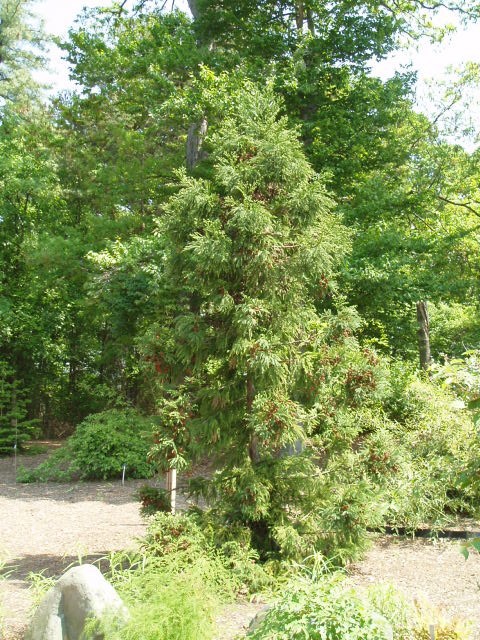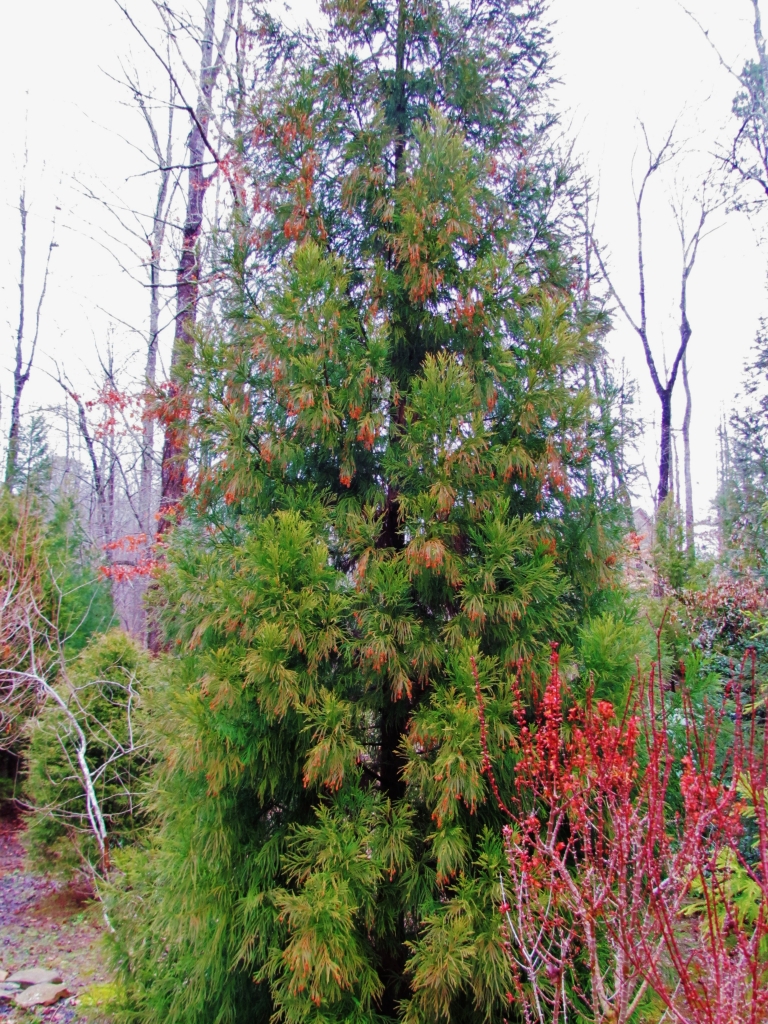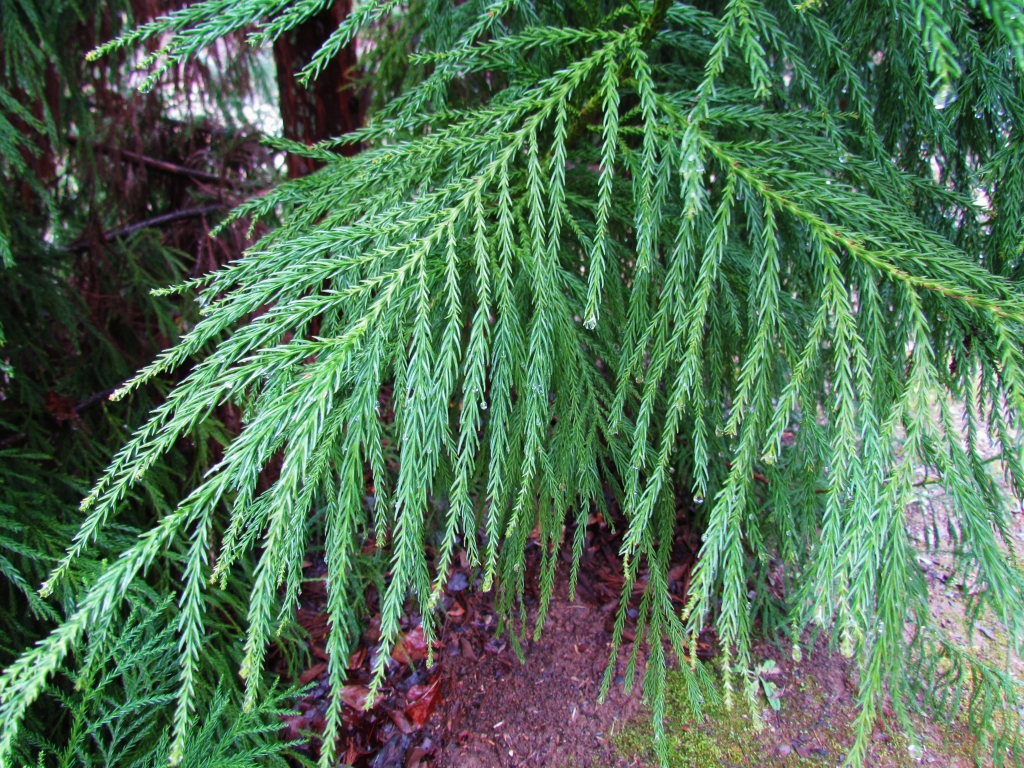Cryptomerica japonica var. sinensis was first described in 1870 by Friedrich Anton Wilhelm Miquel (1811-1871) in Siebold & Zuccarini, Flora of Japan. Synonyms include:
Leaves. In var. japonica, they are more or less straight at least in the proximal half of the branch, often recurved apically on leader branchlets, arising at a 35 to 45° to axis on leader branchlets, 45 to 55° on fertile branchlets, they are rigid and hard. In var sinensis, they usually strongly incurved throughout, arising at 15 to 30° angles to axis on leader branchlets, 30 to 40° on fertile branchlets, and are rigid but relatively soft.
Pollen cones. In var. japonica they are longer than their subtending leaf. In var. sinensis, they are shorter than their subtending leaf.
Seed cones. In var. japonica they have 20 to 30 cone scales, each bearing 2-5 seeds; the distal projections of bracts and cone scales 0.08 to 0.14 inch (2 - 3.5 mm) long. In var. sinensis they have ca. 20 cone scales, each bearing 2 seeds; distal projections of bracts and cone scales are 0.04 to 0.08 inch (1 - 2 mm) long.
Cold hardiness. Var. sinensis is more tender (USDA zone 8).
Growth habit. C. japonica var. sinensis grows more open and loose. Branches more slender and drooping
Distribution. This variety is native to China - Fujian (Nanping Shi), Jiangxi (Lu shan), Sichuan, Yunnan, and northwestern Zhejiang (Tianmu shan) provinces, and is also widely introduced for forestry in other provinces of China. It grows in forests on deep, well-drained soils subject to warm, moist conditions at elevations from below 3,500 feet (1,100 m) up to 8,000 feet (2,500 m) above sea level.


